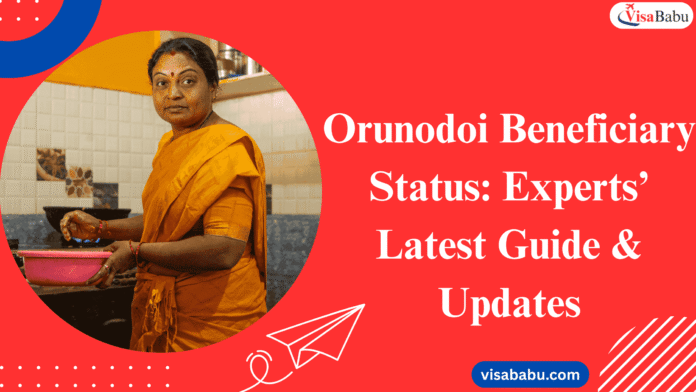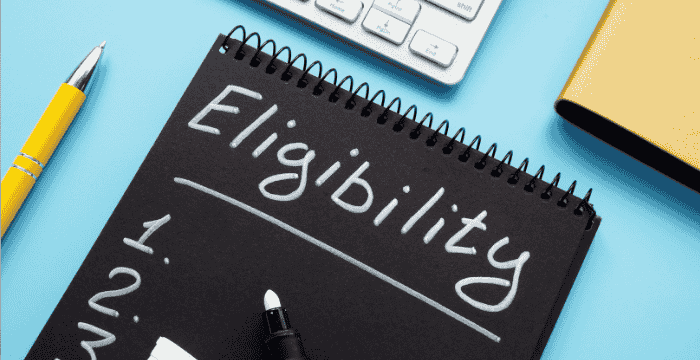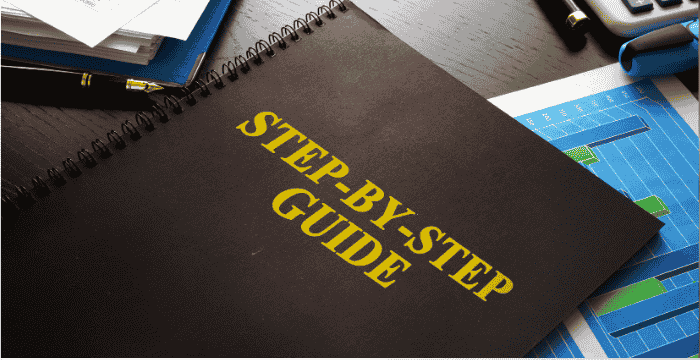The Orunodoi beneficiary status has become a crucial concern for millions of women across Assam as the government continues to expand this transformative welfare scheme. When Orunodoi 3.0 starts in September 2024, figuring out if you are eligible and checking your status will help you get up to ₹1,400 each month.
Latest News & Key Insights (2025)
The Assam government has played a major role in increasing the number of Orunodoi participants, turning it into one of the largest Direct Benefit Transfer schemes in the country. Orunodoi beneficiary status checking has been streamlined through digital platforms, making it easier for women to access their entitlements.
Important milestones in 2025 involve:
- The third phase of Orunodoi began on 19 September 2024, including 37 lakh beneficiaries who had not been covered earlier.
- Each person now receives ₹1,400 in monthly aid, which is much higher than the previous ₹830.
- From September 2024, all applicants will need to link their ration card with their Aadhaar card.
- Online orunodoi beneficiary status checking is now available via the official Assam government portal.
- All beneficiaries are listed by district and updated regularly, which makes it simple for applicants to see if they are included.
- Assistance is given first to widows, unmarried women aged 45 or older, persons with disabilities and transgender people.
- Every month, on the first, the nominated woman will see the funds credited directly to her bank account through Direct Benefit Transfer (DBT)
- Those approved for Orunodoi 3.0 must reapply to receive benefits again.
- Now, the scheme assures farmers will have money for key products like medicines, pulses, sugar, fruits, vegetables and household spending.
- The aim of the Assam government is to make grievances heard and addressed all through the Orunodoi portal.
Hook: With the Orunodoi Scheme’s expansion and digital transformation, understanding your Orunodoi beneficiary status is more crucial than ever. Are you or those close to you qualified to get the higher benefits in 2025? This guide covers all the details about checking your status, what you require to be eligible, and how to give yourself the best chance of successful approval.
What is the purpose of the Orunodoi scheme?
The orunodoi beneficiary status system operates under one of Assam’s most ambitious welfare initiatives. On 2nd October 2020, the Government of Assam introduced the Orunodoi Scheme as a major Direct Benefit Transfer (DBT) program to give monthly financial support to women from low-income families.
The main objective is to let women look after their families and provide them with important support for health, nutrition and a secure home. The program understands that women play a key part in family care and works to help them become financially independent, which raises the living standards for all members.
Since it was started, the scheme has expanded greatly, with the government adding more benefits and reaching more people. When it began, the program offered ₹830 per month to beneficiaries; now, the scheme supports over 37 lakh families. across Assam, which has made it one of the top welfare schemes at the state level in India.
The main focus of the Orunodoi Scheme includes:
| Objective | Description | Impact |
| Women Empowerment | Direct financial assistance to women beneficiaries | Enhanced decision-making power in households |
| Poverty Alleviation | Monthly support for basic necessities | Improved living standards for vulnerable families |
| Health & Nutrition | Dedicated funds for medicines and nutritious food | Better health outcomes for families |
| Financial Inclusion | Bank account linkage and digital payments | Increased access to formal banking services |
| Social Security | Comprehensive support for marginalised groups | Reduced economic vulnerability |
It is designed to focus on people who are most in need, especially widows, women who have separated from their husbands, families with disabilities and those living at or just above the poverty line. It helps the government make sure that the people who need assistance receive help.
Orunodoi Beneficiary Status: How to Check in 2025
Checking your orunodoi beneficiary status has become significantly easier with the introduction of digital platforms and streamlined processes. Both online and offline methods have been used by the Assam government to help every eligible woman find out about her application and the payments involved.
Online Method
The online orunodoi beneficiary status checking system provides the most convenient way for beneficiaries to track their application progress and payment status. Enrolled applicants can easily use the official Assam government portal to get real-time updates.
A detailed guide to checking your status online:
| Step | Action Required | Details |
| 1 | Visit the Official Portal | Navigate to assam.gov.in or the dedicated Orunodoi portal |
| 2 | Locate Status Check Section | Find the “Beneficiary Status” or “Check Status” option |
| 3 | Enter Application Number | Input your 7-digit beneficiary/application number |
| 4 | Provide Additional Details | Enter your mobile number or Aadhaar number for verification |
| 5 | View Status Information | Access payment history, application status, and PFMS details |
It gives customers all the details they need, such as payment and transaction data, checks the status of their accounts, and the documents they still require. Beneficiaries are able to download proofs of payment and see how much they have received every month.
How does online status checking work and its benefits?
- 24 hours a day, users may log in or check their accounts from any online device
- Being able to follow the status of both payments and the application process.
- Online payment receipts and a record of your transactions
- Being informed right away if actions or attention are needed
- Fewer trips are required to government agencies.
Offline Method
For beneficiaries without internet access or those preferring traditional methods, the runodoi beneficiary status can be verified through offline channels. The administration has created several outreach services at the local level so that every eligible female receives help.
Offline verification choices are available as well.
| Location | Services Available | Contact Information |
| Gaon Panchayat (GP) Office | Status verification, application assistance, and grievance handling | Local GP Secretary |
| Village Council Development Committee (VCDC) | Beneficiary list display, document verification | VCDC Chairman |
| Urban Local Body (ULB) Office | Urban area status checking, application support | ULB Officials |
| Block Development Office | District-level queries, appeal processing | Block Development Officer |
| District Collector Office | High-level grievances, policy clarifications | District Collector |
Local officials update the records of beneficiaries and can give immediate support when people have questions about their status. People can go to these offices to apply for new benefits and to solve problems for those who already receive the benefits.
You will have to show certain documents for offline verification.
- The application reference number.
- The Aadhaar Card copy.
- Everyone must have a Ration Card by September 2024 (This goes into effect from January 2024).
- The account information for the bank.
- The mobile number entered during registration
Eligibility Criteria for Orunodoi Beneficiaries in 2025
Understanding the orunodoi beneficiary status requirements is essential for successful enrollment in the scheme. Eligibility for a family in Assam depends on its economic situation, if the family is a local resident, and on priority groups, so that families in real need receive the support first.
The main things required for eligibility are:
| Criteria Category | Requirement | Verification Method |
| Residency | Permanent resident of Assam | Domicile certificate, Voter ID |
| Current Residence | Presently living in Assam | Address verification documents |
| Income Limit | Annual household income below ₹2 lakh | Income certificate, affidavit |
| Age Requirement | Women aged 16-59 years | Age proof documents |
| Bank Account | An active bank account in the beneficiary’s name | Bank passbook, account details |
Priority categories for faster processing:
The scheme gives special consideration to vulnerable groups, ensuring their orunodoi beneficiary status receives expedited processing:
| Priority Group | Specific Criteria | Additional Benefits |
| Widows | Women who have lost their husbands | Immediate processing, higher priority |
| Divorced/Separated Women | Legally separated or divorced women | Fast-track application review |
| Unmarried Women (45+ yrs) | Single women above 45 years of age | Priority consideration |
| Disabled Family Members | Households with specially-abled members | Additional support provisions |
| Transgender Persons | Transgender individuals | Special category benefits |
| Homeless Families | Households without permanent shelter | Emergency assistance provisions |
Detailed description of inclusion criteria:
| Criteria Type | Specific Requirements | Documentation Needed |
| Economic Status | Household income below ₹2 lakh annually | Income certificate, tax returns |
| Land Holdings | Less than 1.5 kathas in Kamrup Metro, 3 kathas elsewhere | Land records, revenue documents |
| Family Composition | Only one woman beneficiary per household | Family composition certificate |
| Health Conditions | Families with members having specific disabilities | Medical certificates |
| Social Category | Priority for marginalised communities | Caste certificate (if applicable) |
Exclusion criteria:
Certain categories are automatically excluded from orunodoi beneficiary status to ensure resources reach the most needy:
- Permanent and contractual government staff
- People are required to pay income taxes
- People with four-wheelers are members of families.
- Those with an annual income over ₹2 lakh
- Business or commercial families
- Having land and property beyond what is allowed
Orunodoi 3.0: What’s New in 2025?
The Orunodoi beneficiary status system has undergone significant transformation with the launch of Orunodoi 3.0, representing the most comprehensive upgrade since the scheme’s inception. It brings better benefits, wider coverage, and new technology to benefit more individuals in Assam.
What’s new in Orunodoi 3.0:
| Feature | Previous Version | Orunodoi 3.0 | Improvement/Change |
| Monthly Benefit | ₹830 | ₹1,400 | 68% increase |
| Beneficiary Coverage | 24.6 lakh families | 37 lakh families | 50% expansion |
| Digital Integration | Basic online portal | Comprehensive digital platform | Full digitalization |
| Document Requirements | Basic verification | Mandatory Aadhaar & Ration Card | Enhanced verification |
| Payment System | Standard DBT | Advanced PFMS integration | Faster processing |
New updates and better features:
The upgraded orunodoi beneficiary status system incorporates several innovative features designed to improve user experience and ensure transparent benefit delivery:
| Innovation | Description | User Benefit |
| Real-time Tracking | Live status updates and payment notifications | Immediate information access |
| Mobile Integration | SMS alerts and mobile app support | Enhanced accessibility |
| Grievance Portal | Dedicated complaint resolution system | Faster issue resolution |
| Document Upload | Digital document submission capability | Reduced paperwork |
| Multi-language Support | Interface in Assamese, Bengali, and English | Better user understanding |
New Mandatory Requirements Set for 2025
Starting from September 2024, all applicants must comply with new documentation requirements to maintain their orunodoi beneficiary status:
- Aadhaar Card linkage: Linking the Aadhaar Card is compulsory for every beneficiary.
- Ration Card verification: You need to show your ration card to keep getting the benefits.
- Validating bank account information: Stronger adherence to KYC policies
- Mobile number verification: Verifying your mobile number ensures you get SMS updates and reminders.
- Current proof check: Confirm your current address
Collaborating with Other Programs
Two more welfare schemes have been added to Orunodoi 3.0, forming a broad framework for assistance.
| Scheme Name | Previous Benefit | Integrated Benefit | Total Impact |
| Deen Dayal Divyangjan Achoni | ₹500/month | Included in ₹1,400 | Streamlined support |
| Indira Miri Sarbojanin Biswa Pension | ₹300/month | Integrated benefits | Simplified process |
| Core Orunodoi | ₹830/month | Enhanced to ₹1,400 | Increased assistance |
Step-by-Step Guide to Apply for the Orunodoi Scheme in 2025
Securing your orunodoi beneficiary status requires following a systematic application process that has been streamlined for both online and offline submissions. The government in Assam has streamlined the process to allow as many people to access services without undergoing verification.
Applying for a US university (Online and Offline)
Online applications are the standard method today:
The digital orunodoi beneficiary status application system offers convenience and faster processing for tech-savvy applicants:
| Step | Process | Required Information | Timeline |
| 1 | Portal Registration | Visit the official Assam government portal | Immediate |
| 2 | Personal Details Entry | Name, age, address, and contact information | 10-15 minutes |
| 3 | Document Upload | Aadhaar, Ration Card, bank details, photos | 15-20 minutes |
| 4 | Verification | OTP verification and document validation | 2-3 minutes |
| 5 | Submission | Final review and application submission | 2-3 minutes |
| 6 | Acknowledgment | Application number generation and receipt | Immediate |
Offline application process:
For applicants preferring traditional methods, orunodoi beneficiary status can be secured through local government offices:
| Location | Process | Documents Required | Processing Time |
| GP/VCDC Office | Form collection and submission | All original documents | 7-10 days |
| Block Office | Application review and verification | Photocopies with originals | 10-15 days |
| District Office | Final approval and status update | Complete documentation | 15-30 days |
A list of required documents:
| Document Type | Specific Requirements | Purpose | Mandatory/Optional |
| Identity Proof | Aadhaar Card (original + copy) | Identity verification | Mandatory |
| Residence Proof | Ration Card, Voter ID, or Domicile Certificate | Address verification | Mandatory |
| Income Proof | Income certificate or affidavit | Economic status verification | Mandatory |
| Bank Details | Passbook first page, account number | Payment processing | Mandatory |
| Age Proof | Birth certificate or school certificate | Age verification | Mandatory |
| Priority Category Proof | Widow certificate, disability certificate | Priority processing | Optional |
How to complete and submit an application form:
Accurate information is crucial for successful run-of-the-mill beneficiary status approval:
- Personal Information: All your documents should have the same name on them.
- Address Details: Give the full current address, identifying the PIN code.
- Family Members: List each family member along with their relationship.
- Income Declaration: Declare your true annual household income.
- Bank Account: Supply the account details currently in use by the beneficiary
- Mobile Number: Add your phone number so you can get SMS alerts.
District-wise Orunodoi Beneficiary List in 2025
The orunodoi beneficiary status verification system includes comprehensive district-wise lists that enable applicants to check their inclusion and track local implementation progress. Official agencies often update these lists and make them accessible to everyone.
District coverage and beneficiary distribution:
| District | Total Beneficiaries (2025) | Population Coverage | Priority Categories |
| Kamrup Metro | 2,85,000 | 35% of eligible women | Urban poor, working women |
| Nagaon | 3,12,000 | 42% of eligible women | Rural families, agricultural workers |
| Dhubri | 2,95,000 | 45% of eligible women | Border area families, minorities |
| Cachar | 2,78,000 | 38% of eligible women | Tea garden workers, tribal families |
| Sonitpur | 2,65,000 | 40% of eligible women | Flood-affected areas, farmers |
How to Obtain a District-Wise List of Schools
Checking your orunodoi beneficiary status through district lists provides local context and verification:
| Access Method | Process | Information Available | Update Frequency |
| Online Portal | District filter search | Name, application number, status | Weekly |
| Local Offices | Physical list display | Complete beneficiary details | Monthly |
| Mobile SMS | District code + application number | Individual status updates | Real-time |
| Public Notice Boards | Community centres, panchayat offices | Local area beneficiaries | Bi-weekly |
Details about when each district will implement the plan:
| Phase | Districts Covered | Launch Date | Completion Status |
| Phase 1 | Kamrup Metro, Guwahati, Jorhat | September 2024 | 100% Complete |
| Phase 2 | Nagaon, Dhubri, Cachar, Sonitpur | October 2024 | 95% Complete |
| Phase 3 | Remaining 30 districts | November 2024 | 90% Complete |
| Phase 4 | Remote and border areas | December 2024 | 85% Complete |
Benefits differ depending on the location:
While the core orunodoi beneficiary status benefits remain uniform, certain districts receive additional support based on local needs:
| District Category | Additional Benefits | Justification | Implementation Districts |
| Border Districts | ₹200 extra monthly | Security concerns, limited opportunities | Dhubri, Karimganj, Hailakandi |
| Flood-prone Areas | Emergency assistance fund | Natural disaster vulnerability | Majuli, Dhemaji, Lakhimpur |
| Tea Garden Areas | Healthcare supplements | Occupational health needs | Dibrugarh, Tinsukia, Golaghat |
| Tribal Majority | Cultural preservation funds | Indigenous community support | Karbi Anglong, Dima Hasao |
What Are the Benefits of the Orunodoi Scheme for Beneficiaries?
Understanding the comprehensive benefits available through Orunodoi beneficiary status helps families plan their household budgets and maximise the scheme’s impact on their daily lives. Orunodoi 3.0 now gives people additional support in many crucial areas.
Details on monthly Social Security benefits:
| Benefit Category | Amount (₹) | Purpose | Usage Guidelines |
| Medical Support | 400 | Medicines and healthcare needs | Prescription drugs, health checkups |
| Nutritional Support | 200 | Pulses (50% subsidy for 4kg) | Protein-rich food items |
| Sugar Subsidy | 80 | Sugar purchase (50% subsidy for 4kg) | Household sugar requirements |
| Fruits & Vegetables | 150 | Fresh produce beyond home gardens | Nutritional diversity |
| General Household | 570 | Electricity, LPG, miscellaneous | Utility bills, cooking gas |
| Total Monthly Benefit | 1,400 | Comprehensive family support | Direct bank transfer |
More offerings to help children:
Beyond the standard monthly assistance, runodoi beneficiary status provides access to supplementary benefits:
| Support Type | Eligibility | Benefit Amount | Frequency |
| Emergency Medical | All beneficiaries | Up to ₹5,000 | As needed |
| Natural Disaster Relief | Affected areas | ₹2,000-₹10,000 | During calamities |
| Educational Support | Families with school children | ₹1,000 per child | Annual |
| Skill Development | Women aged 18-45 | Training + ₹3,000 stipend | Course-based |
| Maternity Support | Pregnant beneficiaries | ₹5,000 | Per pregnancy |
Evaluating the results and their positive impact is essential in 2025
The orunodoi beneficiary status system tracks various metrics to assess the scheme’s effectiveness:
| Impact Area | Measurement Metric | 2024 Results | 2025 Targets |
| Poverty Reduction | Families above poverty line | 15% increase | 25% increase |
| Health Improvement | Medical expenditure reduction | 30% decrease | 40% decrease |
| Nutritional Status | Child malnutrition rates | 20% improvement | 35% improvement |
| Women Empowerment | Financial decision-making | 45% increase | 60% increase |
| Education Access | School enrollment rates | 18% increase | 30% increase |
Payment schedule and delivery mechanism:
The orunodoi beneficiary status system ensures timely and transparent benefit delivery:
| Payment Aspect | Details | Verification Method | Troubleshooting |
| Payment Date | 1st of every month | Bank statement, SMS alert | Contact helpline if delayed |
| Transfer Method | Direct Bank Transfer (DBT) | PFMS transaction ID | Check bank account details |
| Notification | SMS to registered mobile | Message delivery status | Update mobile number |
| Receipt Generation | Digital receipt available | Online portal download | Save for records |
| Grievance Handling | 48-hour response time | Complaint tracking number | Escalation to district level |
Resolving Common Issues with Orunodoi Beneficiary Status in 2025
Many applicants face challenges while checking their orunodoi beneficiary status or during the application process. Being aware of usual problems and how to resolve them helps benefits be accessed easily and on time.
Frequent technical issues:
| Problem | Possible Causes | Solution Steps | Prevention |
| Status Not Found | Incorrect application number | Verify the number from the receipt | Keep the application receipt safe |
| Payment Delayed | Bank account issues | Contact the bank and update KYC | Maintain an active account |
| Portal Access Error | Server maintenance | Try during off-peak hours | Use alternative access methods |
| Document Rejection | Poor image quality | Re-upload clear documents | Use proper lighting and focus |
| Mobile OTP Issues | Network problems | Check signal strength | Try alternative verification |
Application-related problems:
Common challenges faced during the runodoi beneficiary status application and their resolutions:
| Issue Category | Specific Problem | Root Cause | Resolution Process |
| Eligibility Rejection | Income criteria failure | Incorrect documentation | Submit revised income proof |
| Document Verification | Aadhaar mismatch | Name spelling differences | Update Aadhaar or submit an affidavit |
| Bank Account Issues | The account is not in the beneficiary’s name | Joint account problems | Open an individual account |
| Address Verification | Current address mismatch | Recent relocation | Submit updated address proof |
| Age Proof Problems | Document unavailability | Missing birth certificate | Use an alternative age proof |
Payment-related troubleshooting:
| Payment Issue | Symptoms | Investigation Steps | Resolution Timeline |
| Amount Not Credited | No bank notification | Check account status, contact bank | 2-3 working days |
| Partial Payment | Less than ₹1,400 received | Verify deductions, check the portal | 1-2 working days |
| Wrong Account Credit | Payment to a different account | Report immediately, provide correct details | 5-7 working days |
| Transaction Failure | Payment initiated, but failed | Bank technical issues | 3-5 working days |
| Duplicate Payment | Multiple credits | System error, report to the authorities | Immediate reporting required |
Grievance redressal mechanism:
The orunodoi beneficiary status system includes a comprehensive complaint resolution framework:
| Level | Authority | Contact Method | Response Time | Escalation |
| Level 1 | GP/VCDC Office | Phone, in-person visit | 48 hours | Block Office |
| Level 2 | Block Development Office | Official email, written complaint | 7 days | District Collector |
| Level 3 | District Collector | Formal application | 15 days | State Level |
| Level 4 | State Helpline | Toll-free number | 24 hours | Chief Minister’s Office |
| Level 5 | Online Portal | Digital complaint system | 72 hours | High-level review |
Steps to Ensure a Smooth Process:
| Best Practice | Description | Benefit | Implementation |
| Regular Updates | Keep documents current | Avoid verification delays | Annual review |
| Mobile Number Maintenance | Active registered number | Receive timely notifications | Monthly verification |
| Bank Account Activity | Regular transactions | Prevent account freezing | Monthly usage |
| Portal Monitoring | Regular status checks | Early problem detection | Weekly login |
| Document Backup | Multiple copies storage | Quick replacement if missing | Digital and physical copies |
Regularly Asked Questions (RAQs)
The orunodoi beneficiary status system generates numerous queries from applicants and beneficiaries. The FAQs answer many of the most common questions and guide people participating in the scheme.
Questions falling under general schemes:
| Question | Answer | Additional Information |
| What is the current monthly benefit amount? | ₹1,400 per month under Orunodoi 3.0 | Increased from ₹830 in previous versions |
| How often are payments made? | Monthly, on the 1st of each month | Direct bank transfer via the DBT system |
| Can multiple women from the same family apply? | No, only one woman per household | Family head nomination is required |
| Is there an age limit for beneficiaries? | Yes, women aged 16-59 years | Age proof is required during the application |
| What happens if I move to another district? | Update the address through the local office | The transfer process takes 15-30 days |
Questions about application processes and eligibility:
| Question | Answer | Documentation Required |
| Can I apply if my husband is employed? | Yes, if household income is below ₹2 lakh | Income certificate or affidavit |
| Do I need a ration card to apply? | Yes, mandatory from September 2024 | Valid ration card copy |
| What if I don’t have an Aadhaar card? | Aadhaar is mandatory for enrollment | Apply for Aadhaar first |
| Can divorced women apply? | Yes, divorced women get priority | Divorce decree or legal separation proof |
| Is there a deadline for applications? | No fixed deadline, applications accepted continuously | Apply as soon as eligible |
Issues with payment or system usage:
| Question | Answer | Action Required |
| Why is my payment delayed? | Bank account or KYC issues | Contact the bank and update details |
| How do I check my payment history? | Use the online portal with the application number | Log in to an official website |
| What if I receive the wrong amount? | Report to the local office immediately | Provide bank statement proof |
| Can I change my bank account? | Yes, through the local office or online portal | Submit new account details |
| How do I get payment receipts? | Download from the online portal | Save digital copies for records |
Confirming and Verifying Guest Details:
The orunodoi beneficiary status verification process addresses these common concerns:
| Query Type | Response | Follow-up Action |
| Status shows ‘Under Review’ | Application being processed | Wait 15-30 days for the update |
| Status shows ‘Rejected’ | Check the rejection reason online | Submit missing documents |
| Status shows ‘Approved’ but no payment | Bank account verification pending | Contact the bank for KYC completion |
| Cannot find status online | Application number incorrect | Verify from application receipt |
| Status not updated after document submission | Processing delay | Contact local office after 7 days |
Conclusion
The orunodoi beneficiary status system represents a transformative approach to women’s empowerment and poverty alleviation in Assam. Thanks to the changes in Orunodoi 3.0, eligible women now get ₹1,400 every month, which greatly helps improve their family’s financial situation and living standards.
Understanding your orunodoi beneficiary status and navigating the application process effectively ensures you don’t miss out on these crucial benefits. Because the system is now digital, it is simpler for people to check their status and ensure that benefits are delivered in a clear and open manner. Women can use online services or visit local offices, and the support system aims to deliver entitlements to every eligible woman.
Of the 37 lakh individuals now covered, it reflects that the Assam government is committed to development for everyone. Widows, divorced women, and families with disabilities are given help first by the scheme to meet the needs of society’s most vulnerable people.
For those yet to apply or facing issues with their Orunodoi beneficiary status, the streamlined processes and multiple support channels provide clear pathways to resolution. If you constantly review your status, keep your documents current, and use the grievance options, your benefits will be given in a smooth manner.
As the program develops, you should keep up with the latest information to maintain your access and meet the needs for benefits. The Orunodoi Scheme is like a beacon to millions of women in Assam, giving them hope, financial support, and making them feel more respected and confident.
Take action today by checking your orunodoi beneficiary status and ensuring your family receives the support it deserves. Improvements in both the benefits and systems make now an excellent time to take part in this important welfare scheme.
Frequently Asked Questions (People Also Ask)
Q1. How can I check my Orunodoi beneficiary status online?
Ans. Access the Orunodoi section on the main website of the Assam government, at assam.gov.in, by providing your 7-digit application number and see your status, payments and transaction information.
Q2. What documents must I have for using Orunodoi 3.0?
Ans. Aadhaar Card, Ration Card, details for a bank account, income certificate, proof of age and proof of address are all required. Extra documents may be necessary for categories that are considered urgent, such as a widow or disability certificate.
Q3. Is it possible to update my bank account for the Orunodoi scheme?
Ans. You are able to update your bank account through the online system or by going to your local GP/VCDC office with your new account documents and a written request.
Q4. What should I do if my name is left out of the list of beneficiaries?
Ans. First, confirm the number of your application and look at the correct list of districts. Should the card not arrive, present the office with your payment receipt and documents. If you do not get a positive decision, you may have to try again by reapplying.
Q5. How regularly does the Orunodoi beneficiary list change?
Ans. Beneficiary status can be checked weekly on the online portal, and each district’s list is updated each month. After each 1st-of-the-month disbursement, real-time updates are posted for your payment status.










